Secret Gardeners: Exploring the Lush Gardens of Brazil with João
Posted by SECRET GARDENER

Above: João plants a Guava tree
Join us this week on a vibrant journey to the tropical paradise of Brazil, where our founder, João, takes us on a tour of his parents' stunning garden in Minas Gerais. From the rich red soil to the abundance of wildlife, plants and delicious fruits, this garden is a true testament to the diversity of nature. We discuss João's favourite plants, share his tips for planting guava trees and taking bougainvillea cuttings, and discover the unique flavours of Brazilian cuisine.
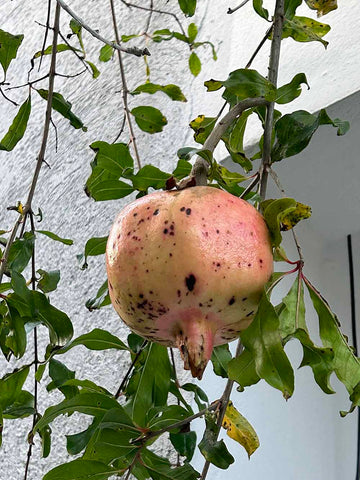
Above: Pomegranate
What are the conditions like for plant growth?
In the subtropical climate of Minas Gerais, plants thrive under the warm embrace of the sun. With an average temperature ranging from 28-32°C and irregular rainfall between November and March, this region offers ideal conditions for a wide variety of tropical plants, which has shaped the growth of the garden.
João's parents' garden is a treasure trove of nature's bounty, boasting limes, pomegranates, passion fruit, mangoes, blackberries, grapes, acerola (Barbados cherry), and the vibrant red guava, among many other delicious crops.
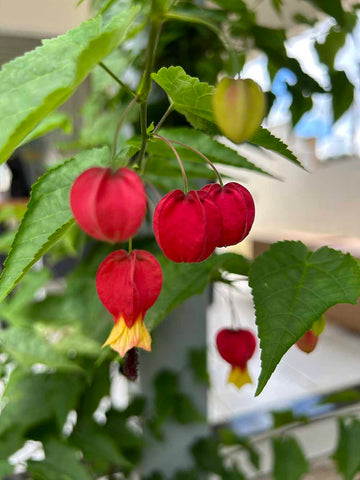
Above: Abutilon megapotamicum, a species native to Brazil, Argentina and Uruguay, is a popular ornamental plant and one of the hummingbirds’ favourites!
The history of the garden: wildlife and garden harmony
João's parents have lived in this tropical haven for 13 years, cultivating a lush landscape that has evolved over time. Most of their foliage was planted within the first year or so of living there, so plants like the lush bougainvillea have had over a decade of growth.
A range of wildlife calls this garden home. From frogs and canaries to blackbirds, parrots, and doves, the garden is a haven for diverse bird species. João's photos showcase the vibrant avian life, including the melodious "Bem-te-Vi" (great kiskadee), the charming "Sabiá" (thrush, the national bird of Brazil), and the mesmerizing hummingbirds, of which there are two different species.
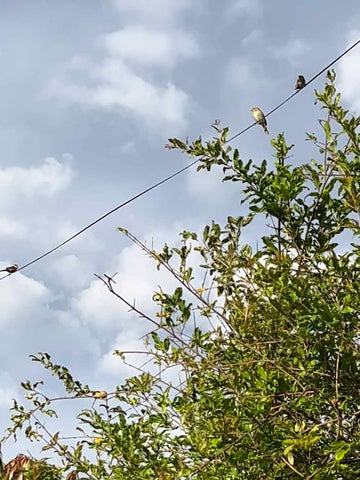
Above: birds in the garden
Bougainvillea: a riot of purple splendour
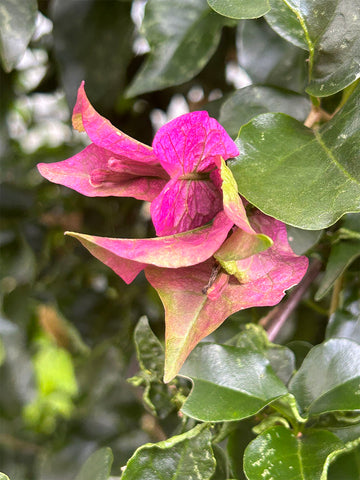
Above: flowers of the bougainvillea
In the garden, João demonstrates the art of taking cuttings from the beautiful purple bougainvillea to propagate new plants. The secret to successful propagation lies in a sharp pair of scissors.
Take your cutting at an angle and allow the stem to root in water for 24 hours before transferring it to a bag of some good old soil enriched with nourishing manure. In a few weeks’ time the cutting should have some new shoots growing, and you can then transplant it to a new home.

Above: the cut stem of the bougainvillea for propagation
Unsurprisingly, a pair of garden secateurs is João's most used gardening tool, which he keeps handy in his Heavy Duty Camo Print Makers Apron.
Unveiling the secrets of guava trees
João next takes us through the steps of planting a guava tree on his plot of land, next door to his parents’ garden. The lush, nutrient-rich soil is a deep red colour (from the high levels of iron oxide) and provides an ideal fertile foundation for the guava’s growth. This type of soil forms in areas where the climate is humid, such as this area of Minas Gerais.
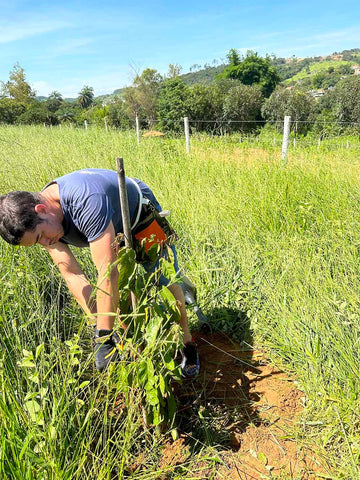
Above: João plants a guava tree on his plot of land
On this sunny patch of land, João plants a guava tree which grew from a seedling. This and other guava trees were accidentally growing on João's plot, which usually happens as parrots eat the guava and spread the seeds all over the place! Guavas will grow best in areas of full sun, and rich fertile soil.
In Brazil, guavas are enjoyed as a fruit or in jam, and the state of Minas Gerais is well known for its famous Romeu e Julieta (Romeo and Juliet) dessert, a tantalising combination of slightly salty cheese and sweet guava jam called goiabada.
João's tips to planting a guava tree:
- Dig a hole for the plant, always 10-15cm bigger than the root ball size.
- After planting the tree, fill the hole with soil and manure if possible.
- Dig a slight trench around the plant to make sure the rainwater doesn’t run.
- Cover with grass to keep the moisture in.
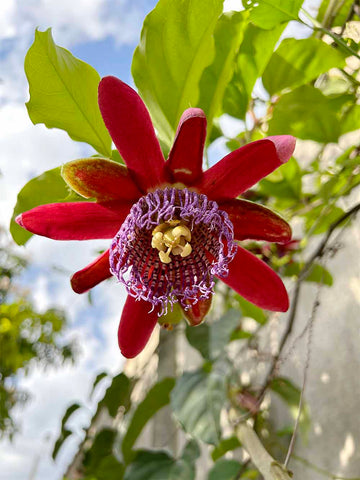
Above: a red passionflower, native to South America, in João's parents' garden
Other crop produced in the garden include carrots, rosemary, parsley, and beetroot, as well as flowers such as lavender, geraniums, and roses. Chayote vines grow in vegetable beds, unique type of squash known locally as "chuchu," which tastes like a cross between a cucumber and a courgette.
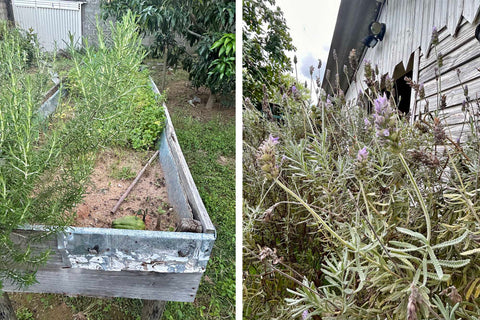
Above left: Rosemary and chuchu (bottom right of the planter) grow in the garden; right: Lavender plants
João's favourite plant is the grape vine. “It isn’t a straightforward tree to get fruits from and it produces beautiful organic grapes,” he explains, “and it is to do with my father’s green fingers I believe.”

Above: João cuts grapes from the vine in his parent's garden, tended to by his green-fingered father
What’s next for the garden?
“Well, it’s more about keeping it under control now! All the plants are mature and there is a lot going on. My mother is at the limit of her physical capacity, so I try to help when I can.”
***


